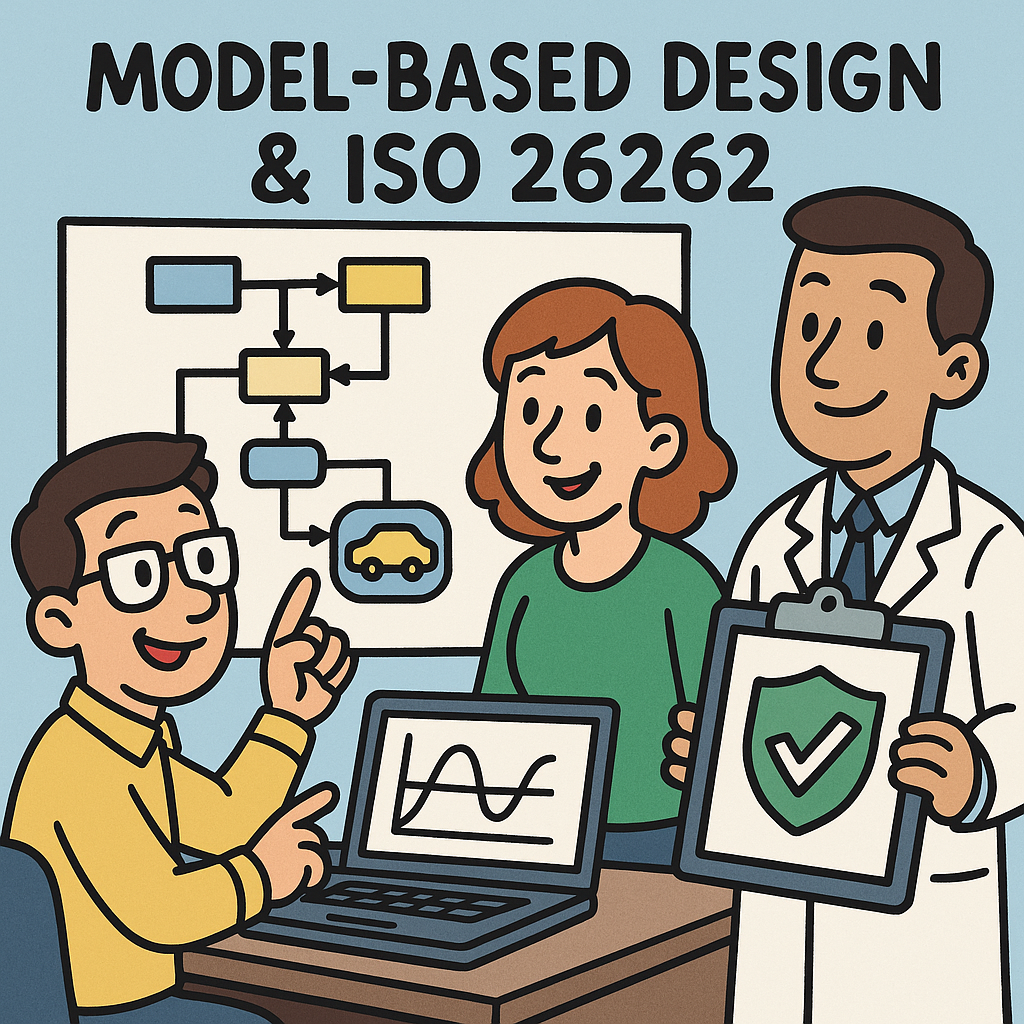Understanding ISO 26262 and ASIL-D Compliance
As automotive systems evolve, ensuring their safety and reliability becomes paramount, especially when dealing with real-time control systems. ISO 26262 is an international standard for functional safety in automotive systems, which introduces various Automotive Safety Integrity Levels (ASIL) to classify the safety requirements based on potential hazards. Among these levels, ASIL-D represents the highest degree of risk. Achieving compliance with ASIL-D requires rigorous processes, including comprehensive testing, validation, and documentation.
Challenges in Integrating Model-Based Design Tools
Model-Based Design (MBD) tools offer significant advantages for developing complex automotive systems by enabling simulation, testing, and code generation from models. However, integrating these tools with ISO 26262 compliance, particularly at the ASIL-D level, presents several challenges:
- Verification and Validation: One of the core tenets of ASIL-D compliance is the need for exhaustive verification and validation (V&V) of the software and hardware components. MBD tools must provide traceability from requirements to design and implementation, which can be cumbersome.
- Toolchain Compatibility: An effective MBD workflow may involve multiple tools, such as MATLAB/Simulink for modeling and a real-time operating system (RTOS) for deployment. Ensuring these tools work seamlessly while adhering to safety standards is a significant hurdle.
- Complexity of Safety Mechanisms: Implementing safety features like monitoring, redundancy, and fail-safes is inherently complex. MBD must support the design of these mechanisms while ensuring that they do not introduce new risks.
Design Decisions Impacting Compliance
When designing a real-time control system with ASIL-D compliance, every design decision can have far-reaching consequences. Let’s explore some critical areas:
Hardware Architecture
The choice of hardware plays a pivotal role in achieving ASIL-D compliance. Redundant systems are often employed to mitigate single points of failure. For instance, using dual microcontrollers with error detection can enhance system reliability. However, this redundancy increases cost and complexity. Engineers must carefully balance safety requirements against budget constraints and performance needs.
Firmware Development
Firmware for ASIL-D systems must be designed with safety as a priority. The implementation of safety mechanisms, such as watchdog timers and safe state transitions, is crucial. Additionally, developers should adhere to coding standards like MISRA C to minimize errors and enhance readability. Integrating safety checks into the firmware can add overhead but is necessary to meet compliance.
Algorithm Optimization
Algorithms that govern control decisions must be designed to ensure deterministic behavior. In a real-time context, this means avoiding non-deterministic constructs that could lead to unpredictable outcomes. Furthermore, the decision to use model predictive control (MPC) versus simpler control strategies can significantly affect performance and safety. While MPC might offer better performance, it requires more computational resources and can introduce additional complexity in validation.
Solutions for Effective Integration
To navigate the challenges of ISO 26262 ASIL-D compliance while leveraging Model-Based Design tools, several strategies can be employed:
- Automated Traceability: Utilize MBD tools that provide automated traceability features. This ensures that every requirement is mapped through design, implementation, and testing, simplifying the V&V process.
- Unified Toolchain: Opt for a unified toolchain that integrates modeling, simulation, and testing. This reduces compatibility issues and streamlines the workflow, allowing for efficient safety assessments.
- Incremental Validation: Adopt an incremental approach to V&V, where components are validated as they are developed. This not only identifies issues early but also aligns with agile development practices, ultimately speeding up the compliance journey.
Design Trade-offs in Real-World Applications
In practice, the push for ASIL-D compliance often leads to tough trade-offs. For example, developers may face a choice between a high-performance algorithm that is challenging to validate and a simpler one that is easier to assure but may not meet performance benchmarks. The decision often hinges on the specific application, such as whether the system is responsible for critical safety functions like braking or merely comfort functionalities like adaptive cruise control.
Moreover, the integration of over-the-air updates for software can enhance vehicle functionality post-deployment, but it also raises safety concerns. Ensuring that updates do not compromise ASIL-D compliance is a critical consideration. Every new feature must be assessed for its impact on safety, requiring a robust change management process.
As the automotive industry continues to innovate, the interplay between Model-Based Design and ISO 26262 compliance will remain a focal point for engineers. Carefully navigating the inherent challenges and making informed design decisions will be essential for creating safe and reliable real-time automotive control systems that meet the stringent demands of ASIL-D compliance.



